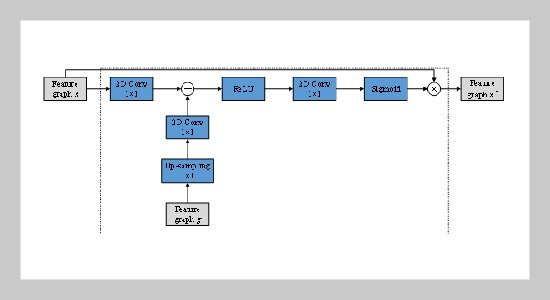- [1] Y. Li, G. Blois, F. Kazemifar, and K. T. Christensen, (2021) “A particle-based image segmentation method for phase separation and interface detection in PIV images of immiscible multiphase flow" Measurement Science and Technology 32(9): 095208. DOI: 10.1088/1361-6501/abf0dc.
- [2] S. Yin, Y. Zhang, and S. Karim, (2018) “Large scale remote sensing image segmentation based on fuzzy region competition and Gaussian mixture model" IEEE Access 6: 26069–26080. DOI: 10.1109/ACCESS.2018.2834960.
- [3] H. Ahmad, S. K. Kim, J. H. Park, and S. Y. Jung, (2022) “Development of two-phase flow regime map for thermally stimulated flows using deep learning and image segmentation technique" International Journal of Multiphase Flow 146: 103869. DOI: 10.1016/j.ijmultiphaseflow.2021.103869.
- [4] Q. Chen, L. Zhao, J. Lu, G. Kuang, N. Wang, and Y. Jiang, (2012) “Modified two-dimensional Otsu image segmentation algorithm and fast realisation" IET Image Processing 6(4): 426–433. DOI: 10.1049/iet-ipr.2010.0078.
- [5] Q. Chen, B.-l. Xiong, J. Lu, and G.-y. Kuang, (2010) “Improved two-dimensional Otsu image segmentation method and fast recursive realization" Journal of Electronics and Information Technology 32(5): 1100–1104. DOI: 10.3724/SP.J.1146.2009.00627.
- [6] E. Tu, L. Cao, J. Yang, and N. Kasabov, (2014) “A novel graph-based k-means for nonlinear manifold clustering and representative selection" Neurocomputing 143: 109–122. DOI: 10.1016/j.neucom.2014.05.067.
- [7] L. Zappella, X. Llado, E. Provenzi, and J. Salvi, (2011) “Enhanced local subspace affinity for feature-based motion segmentation" Pattern Recognition 44(2): 454– 470. DOI: 10.1016/j.patcog.2010.08.015.
- [8] Y. Zheng, F. Yang, J. Duan, and J. Kurths, (2021) “Quantifying model uncertainty for the observed nonGaussian data by the Hellinger distance" Communications in Nonlinear Science and Numerical Simulation 96: 105720. DOI: 10.1016/j.cnsns.2021.105720.
- [9] Y. Bengio, J.-F. Paiement, P. Vincent, O. Delalleau, N. Roux, and M. Ouimet, (2003) “Out-of-sample extensions for lle, isomap, mds, eigenmaps, and spectral clustering" Advances in neural information processing systems 16:
- [10] A. Babaeian, A. Bayestehtashk, and M. Bandarabadi, (2015) “Multiple manifold clustering using curvature constrained path" PloS one 10(9): e0137986. DOI: 10.1371/journal.pone.0137986.
- [11] I. Tyuryukanov, J. Quiros-Tortos, M. Naglic, M. Popov, M. A. van der Meijden, and V. Terzija. “A post-processing methodology for robust spectral embedded clustering of power networks”. In: IEEE EUROCON 2017-17th International Conference on Smart Technologies. IEEE. 2017, 805–809. DOI: 10.1109/EUROCON.2017.8011221.
- [12] X. Ding and X. Li. “Coastline detection in SAR images using multiscale normalized cut segmentation”. In: 2014 IEEE Geoscience and Remote Sensing Symposium. IEEE. 2014, 4447–4449. DOI: 10.1109/IGARSS.2014.6947478.
- [13] V. Dakulagi, (2020) “A new Nystrom approximation based efficient coherent DOA estimator for radar applications" AEU-International Journal of Electronics and Communications 124: 153328. DOI: 10.1016/j.aeue.2020.153328.
- [14] Y. Wang, H. Wei, X. Ding, and J. Tao, (2020) “Video background/foreground separation model based on nonconvex rank approximation RPCA and superpixel motion detection" IEEE Access 8: 157493–157503. DOI: 10.1109/ACCESS.2020.3018705.
- [15] L. He, (2018) “Ray N Guan Y Zhang H Fast large-scale spectral clustering via explicit feature mapping" IEEE Trans. Cybern 49(3): 1058.
- [16] W. Song, L. Wen, L. Gao, and X. Li, (2019) “Unsupervised fault diagnosis method based on iterative multimanifold spectral clustering" IET Collaborative Intelligent Manufacturing 1(2): 48–55. DOI: 10.1049/ietcim.2019.0003.
- [17] M. Du, S. Ding, and H. Jia, (2016) “Study on density peaks clustering based on k-nearest neighbors and principal component analysis" Knowledge-Based Systems 99: 135–145. DOI: 10.1016/j.knosys.2016.02.001.
- [18] F. Chen, Y. Gao, J. Duan, X. Wang, and Y. Yang. “The research on energy partition of multi-energy complementary park based on the improved SMMC algorithm and AHP”. In: 2018 13th IEEE Conference on Industrial Electronics and Applications (ICIEA). IEEE. 2018, 940–945. DOI: 10.1109/ICIEA.2018.8397847.
- [19] X. Yao, R. Zhang, J. Hu, K. Chang, X. Liu, and J. Zhao, (2022) “Combining intrinsic dimension and local tangent space for manifold spectral clustering image segmentation" Soft Computing 26(18): 9557–9572. DOI: 10.1007/s00500-022-06751-3.
- [20] W. Huang, Q. Hu, Y. Wang, and M. Jiang, (2021) “Multibody nonrigid structure from motion segmentation based on sparse subspace clustering" International Journal of Digital Multimedia Broadcasting 2021: 1–12. DOI: 10.1155/2021/6686179.
- [21] Y. Yuan, Z. Xu, and G. Lu, (2021) “SPEDCCNN: spatial pyramid-oriented encoder-decoder cascade convolution neural network for crop disease leaf segmentation" IEEE Access 9: 14849–14866. DOI: 10.1109/ACCESS.2021.3052769.
- [22] A. Goel and A. Majumdar, (2021) “Sparse subspace clustering friendly deep dictionary learning for hyperspectral image classification" IEEE Geoscience and Remote Sensing Letters 19: 1–5. DOI: 10.1109/LGRS.2021.3112603.
- [23] L. Teng, H. Li, S. Yin, and Y. Sun, (2019) “Improved krill group-based region growing algorithm for image segmentation" International Journal of Image and Data Fusion 10(4): 327–341. DOI: 10.1080/19479832.2019.1604574.
- [24] Y. Han and J. C. Ye, (2018) “Framing U-Net via deep convolutional framelets: Application to sparse-view CT" IEEE transactions on medical imaging 37(6): 1418– 1429. DOI: 10.1109/TMI.2018.2823768.
- [25] Z. Zhu, X. Lan, T. Zhao, Y. Guo, P. Kojodjojo, Z. Xu, Z. Liu, S. Liu, H. Wang, X. Sun, et al., (2021) “Identification of 27 abnormalities from multi-lead ECG signals: An ensembled SE_ResNet framework with sign loss function" Physiological Measurement 42(6): 065008. DOI: 10.1088/1361-6579/ac08e6.
- [26] S. Yin, L. Meng, J. Liu, et al., (2019) “A new apple segmentation and recognition method based on modified fuzzy C-means and hough transform" Journal of Applied Science and Engineering 22(2): 349–354. DOI: 10.6180/jase.201906_22(2).0016.
- [27] J. He and D. Jiang, (2021) “Fully automatic model based on se-resnet for bone age assessment" IEEE Access 9: 62460–62466. DOI: 10.1109/ACCESS.2021.3074713.
- [28] X. Fu, B. Fang, M. Zhou, and S. Kwong, (2021) “Active contour driven by adaptively weighted signed pressure force combined with Legendre polynomial for image segmentation" Information Sciences 564: 327–342. DOI: 10.1016/j.ins.2021.02.019.
- [29] L. Teng, H. Li, S. Yin, S. Karim, and Y. Sun, (2020) “An active contour model based on hybrid energy and fisher criterion for image segmentation" International Journal of Image and Data Fusion 11(1): 97–112. DOI: 10. 1080/19479832.2019.1649309.
















